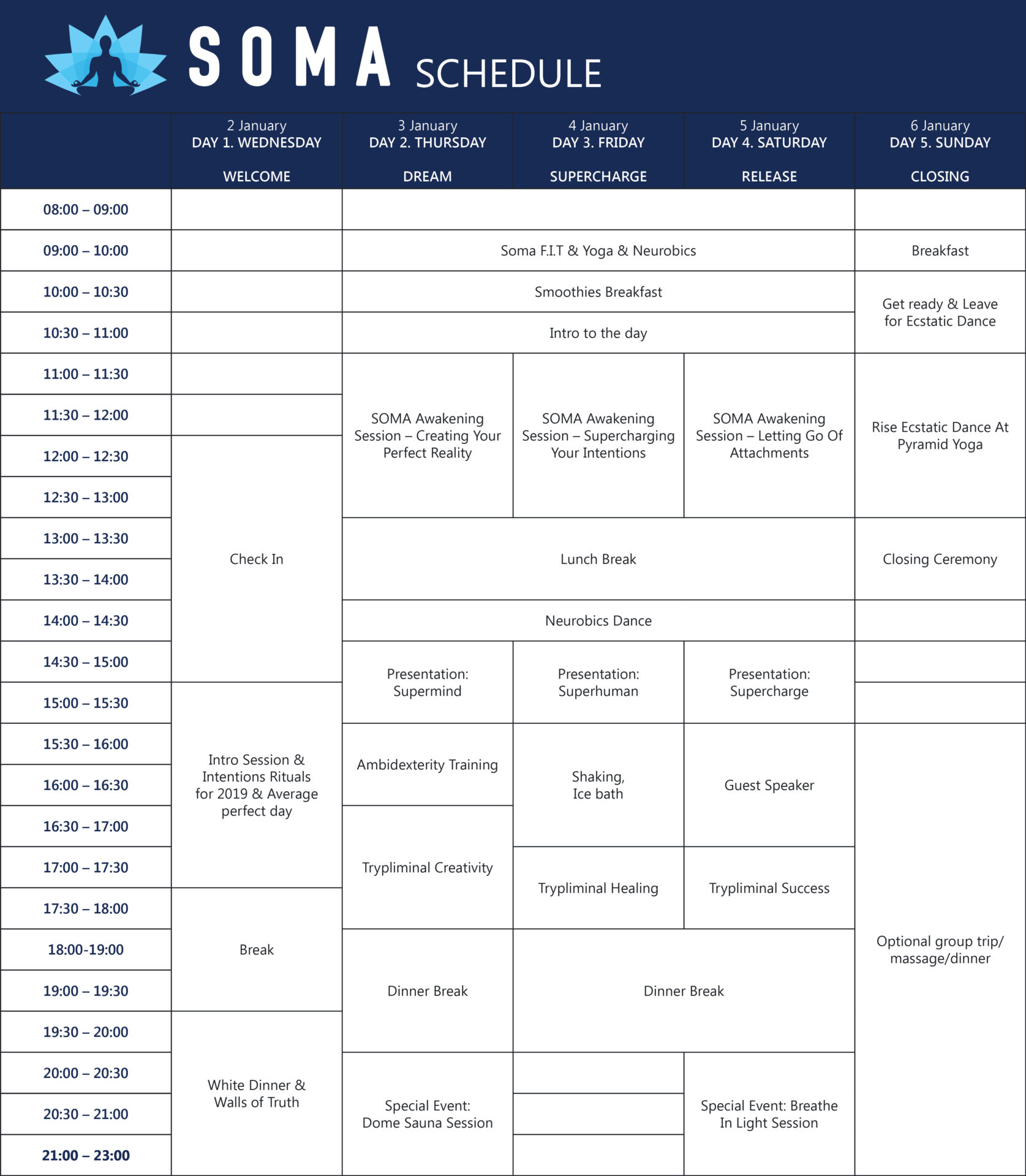Kapalbhati Pranayama is a conscious breathing exercise that can detoxify the body and clear nasal congestion.
The Sanskrit word Kapalbhati breaks down into kapal meaning “skull”, and bhati meaning “to shine”. Another translation for this Kapalbhati Pranayama breathing exercise is “skull shining breath”, or “the shining forehead”.
What exactly does having a shiny forehead have to do with detoxifying the body? The ancient Yogis say that regular practise of Kapalbhati Pranayama makes the forehead glow. This is known as a sign of good health and sharper intellect.
Types of Kapalbhati
Kapalbhati is part of a much larger group of purification rituals used in Hatha Yoga. These ancient healing techniques help “purify” the body and used on their own can be a great addition to your daily breathwork routine.
There are three different ways you can practice Kapalbhati. One type uses only breath while the other two use warm salted water. For beginners, we recommend sticking with the breathwork and seeking professional guidance before moving onto the practices that use water.
- Vatkrama is a subtype of kapalbhati that uses only breath to achieve the desired outcome. This pranayama technique is the inverse to Bhastrika where the inhalation is forced. During Vatkrama, the inhalation is relaxed while the exhalation is forceful, using all your energy to remove all the air from your lungs.
- Vyutkrama uses warm salty water to help clear your nasal passages as well as brush against the mucus membranes creating energy and tingling sensations in your head. During this process, the individual will take freshly prepared warm salt water and sniff it up through their nose, allowing it to drain down the throat into the mouth before spitting it out.
- Sheetkram is the opposite of Vytkrama. During this practice, the individual will take the water through their mouths and expel it through their nose.
Kapalbhati Pranayama Benefits
Kapalbhati is a type of purification pranayama. Even when you don’t use the salt water as a way to help clear out your sinuses, this breathwork technique offers a long list of benefits. Breathwork has been found to help:
- Balance Blood Pressure
- Lower Cortisol Levels
- Increase Emotional Intelligence
- Lower Feelings of Depression and Anxiety
- Increase Feelings of Contentment and Happiness
- Improve Sleep Quality
- Improve Mental Clarity and Alertness
- Improve Cardiac Function
- Promote Creativity
- Clear Nadi Channels
It is said that this breathwork technique can help clear Nadi (energy) channels within the body. Clearing these pathways help reduce our risks of diseases or stagnant energy within ourselves.
Scientific research has shown that individuals who practice Kapalbhati have lower levels of stress even hours after they have finished a session. In addition, the study found that one hour kapalbhati benefits include activating the sympathetic nervous system.
Kapalbhati is energizing, heating, and cleansing.
How Is Kapalbhati Pranayama Good For Detoxifying The Body?
It is said that Kapalbhati Pranayama can remove 80% of the toxins within the body and mind! How true that is, we don’t know. No one’s ever measured that!
Removing Bodily Gases
Kapalbhati Pranayama is best used to detox your body of built up gas.
If you have been experiencing more gas than usual (flatulence, belching) your body might be trying to tell you that something else is not right inside. Sometimes we experience excess gas if we have food intolerances or sensitivities, changes in the gut microbiome, constipation, or if we have been doing activities that cause us to swallow more air than usual.
Excess gas can build up in our bodies and we end up with bloating, indigestion, even a distended abdomen. It can cause discomfort and pain too.
Kapalbhati Pranayama can greatly assist you in the removal of this gaseous build up in the body. This then cleanses and purifies the entire digestive tract for overall improved digestion and nutrient absorption.
Removing Nasal Congestion and Mucus Build-Up
Kapalbhati Pranayama is great for clearing out your sinuses thanks to the forced exhalations it requires. If you are experiencing blocked sinuses due to allergies or a common cold, this exercise can bring some added relief to your current symptoms.
Clearing Nadi Channels
This breathwork exercise is also said to improve the flow of energy along channels known as “Nadis”. The Sanskrit word Nadi, means “motion”, or “flow”. When we have blocked energy channels within the body this blocks the flow of energy, and leaves our bodies susceptible to illness and disease.
When we detox the Nadi energy channels and remove blockages, they can function more smoothly, allowing for the energy to flow through the body with more ease.
How Does Kapalbhati Work?
The forced exhalation used during Kapalbhati is great for clearing and opening up your sinuses. The physical act of “blowing your nose” while using this technique removes any mucus blockages that may be troubling us during a cold or allergy season.
Another way that Kapalbhati works in our body is through the motion of inhaling and exhaling. During these intentional deep breaths, we contract our abdomen, using muscles that don’t get a lot of exercise otherwise. During this process, we also increase blood flow and energy to our internal organs and digestive tract. Don’t be surprised if you end up regularly using the bathroom after you complete your morning breathwork sessions!
Due to these muscle contractions, Kapalbhati is a great tool for helping remove excess gas from our digestive systems. Gas can lead to bloating, pain, or general feelings of discomfort. Kapalbhati breathing may provide a natural and quick solution to your gas troubles.
How To Practice Kapalbhati Pranayama
- Do this first thing in the morning on an empty stomach.
- Sit comfortably in an upright position with your back straight.
- Inhale fully through both nostrils.
- Force the exhalation through both nostrils while at the same time pulling in your belly. Your belly will go back naturally to a normal position and by the natural force of pressure you will inhale a small amount of air again.
- Then immediately force the exhalation through both nostrils again.
- Keep repeating this continuously for around 20-30 repetitions. You can use your mala beads or fingers to count.
- You may feel heat in your body and a tingly sensation around your head. This is a sign of energy building up inside.
- Optionally, you can perform the breath hold component of Longevity at the end of the exercise, followed by Energy on the final inhalation.
It is important with this breathing exercise to keep your breaths moving in a circular, continuously connected rhythm. It is also helpful to put your attention on the abdomen, while sucking it in, and blowing air out the nostrils. This blowing of air out the nostrils is actually a “forced exhalation”. As you are performing this “forced exhalation” you will be simultaneously sucking in your abdomen
Kapalbhati for beginners
Kapalbhati is an advanced pranayama and should be taken seriously when practiced. For beginners, it’s best to practice Vatkrama Kapalbhati, which is the subtype that uses only breathwork.
Tips for Beginners
- Perform Kapalbhati first thing in the morning on an empty stomach.
- Be sure to sit up straight, keeping your body in line is key for proper breathing technique.
- Always practice in a space you are comfortable and stop immediately if you begin to feel ill, light headed, or uncomfortable.
- Be sure to exhale forcefully, really push all your breath out.
- If you are actively exhaling, the natural contraction of your abdominal muscles will allow for a natural inhalation so there is no need to bring too much attention to your inhale during this practice.
Kapalbhati Pranayama Precautions
While the benefits of Kapalbhati Pranayama are hard to ignore, it is important to talk to your doctor or other healthcare provider before beginning a breathwork regimen if you have certain medical conditions.
Individuals with pacemakers, stents, slipped discs in the spine, hernias, or epilepsy disorders may not be able to practice this breathwork technique safely. If you have recently undergone surgery including abdominal surgery, it is best not to perform this technique.
Women who are breastfeeding, pregnant, new mothers, or who are on their menstrual cycle should consult a doctor before performing kapalbhati due to the intense abdominal manipulation required.
It is best to practice kapalbhati under the direct supervision of a professionally trained breathwork coach.
A certified breathwork facilitator is an invaluable tool on your breathwork journey. Being able to have someone guide you can help you achieve your goals quicker, hold you accountable, and offer companionship.
Ready to take the dive and become a breathwork coach yourself? SOMA Breathwork Certification opens the door to an exciting and fulfilling career helping elevate humanity through breath.
What are you waiting for?
More Kapalbhati Benefits
- Increases vital capacity (ability to take deeper breaths) (Bal, 2010).
- Improves lung function:
Comparable to the lung function of athletes (Prakash et al., 2007).
Improves respiratory function (Kumar, 2013). - Encourages rehabilitation from coronary artery disease (Yadav et al., 2009).


Dear Niraj
Thank you for contributing goodness to humanity :
Quintessence; . the word that describes your practice,
relating from living life; just as your self.
Thank you for devoting your time and energy to what I also deem to be worthy of sharing.
Yesterday was my first time to consciously breath the 2:4 rhythm and hold on the exhale
My reaction and bodily response was very playful and on a deep cellular level I want MORE
Its like you are living my dream and I would like more like mindfulness and collaboration of humanity as the life givers we are.
Cheers
P.S. so grateful I got to meet you,
well online and hopefully in person
until then pax
Yes! Thank you and yes, it’s great to meet you too (online for now hehe)
Thank you very much. Indeed this practise is great for ones welbeing. I shall make it as my routine! Thanks a zillion!
Awesome!
Here’s another great Daily routine that will actually take this detox technique to the next level:
https://lp.somabreath.com/dailydoses/
Many blessings!
Beautiful! Thank You soooooooo Much Niraj!
Namaste
YOU are beautiful 🙂